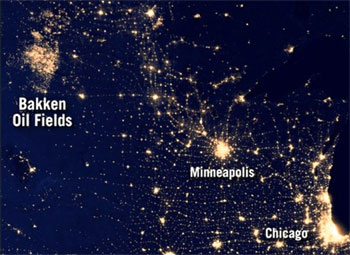Yesterday, the city of Fort Collins, Colorado banned natural gas fracking.
The city has found itself in the midst of the fracking boom, bumping up against residential neighborhoods and even schools.
A huge shale formation, the Niobrara Shale, stretches from Fort Collins to Denver and to Colorado Springs, and the industry has leased hundreds of thousands of acres of land.
Residents are speaking out in an increasingly feverish pitch, especially suburban mothers, notes Gary Wocker in an article on EcoWatch.
Activists have been touring the state giving many dozens of presentations to local government officials, homeowner groups and local activists about the threat of fracking. If it’s not regulated, they warn that many suburban communities could soon look like Weld County in the northern part of the state where there are 18,000 fracking wells, the most of any county in the US.
Those wells have led to a wide range of problems, affecting peoples’ health, air and water quality, impacting water supplies and even the ability to sell real estate.
"With fracking, threat has bred opportunity, and democracy has come alive in Colorado. While it’s profoundly unfortunate that thousands of homeowners are now threatened with the impacts of fracking, it’s also deeply important and powerful that these same homeowners and suburban moms and dads learn how to be active and informed citizens in our democracy. Not only the promise of democracy – but the responsibility of democracy – is becoming real to thousands of people who just a year earlier were likely focused on normal suburban activities," says Wocker.
Fracking Won’t Save US Energy, Like They Say
Fracking is being loudly touted as a key to US energy independence, but new research shows that isn’t true.
In fact, it’s leading to a bubble that will quickly crash, but only after the US is peppered with tens of thousands of expired wells.
You may have seen this photo taken by satellite – it shows the huge amount of light emitted from flaring at natural gas wells in the Bakken formation in North Dakota:

A couple of years ago, the New York Times ran a front page story saying that although natural gas companies claim they’ll deliver a vast domestic energy resource in the US, hundreds of industry emails and internal documents reveal the industry may be over-stating the potential productivity of those wells, misleading investors, and setting them up for an investment bubble.
Now, a report from Energy Policy Forum connects the dots between Wall Street investment banks and the drop in natural gas prices and another from Post Carbon Institute discusses the prospects for these fuels based on an analysis of 60,000 wells.
The most ominous conclusion is the lack of productivity of most wells. They expire so quickly that to maintain productivity, 8600 new wells must be drilled every year. This number will only rise further as "sweet spot" areas are emptied.
Post Carbon finds that 30-50% of shale gas and 40% of shale oil production has to be replaced every year to offset rapid declines in wells.
Wall Street is heavily implicated in the fracking boom. "The main point for me is that the investment bankers heavily promoted shale and put pressure on the companies to meet production targets," says Deborah Rogers, author of the report. "This in turn helped create a glut in the market as we didn’t have demand in place. Prices then plunged which opened the door for large transactional fees for the banks. It is highly unlikely that market savvy bankers didn’t recognize such an opportunity very early on. In fact, I think they created it."
Now, they’re pushing gas exports to shore up failing balance sheets, she says. And that will drive prices up in the US.
"The irony of this is that we used to exploit other areas of the globe to provide energy security for the US and now the US is being exploited to provide energy security to Asia," notes Rogers.
Therefore, the fracking boom may be a costly, risky, short-term "fix" for America’s fossil fuel addiction. It’s more likely that it won’t provide "a century of cheap energy and economic prosperity," as we keep hearing, but instead will end up as a short-term bubble that leaves in its tracks very high environmental costs.
Drill Baby Drill: Can Unconventional Fuels Usher in a New Era of Energy Independence?
Shale & Wall Street: Was the Decline in Natural Gas Orchestrated?
Visit the Shale Bubble website:

Like with any hot topic, shale has conflicting points. Many people claim that it is not safe to use hydrolic fracking, but reports from the DEP state otherwise. According to http://shalestuff.com/controversy-2/msc-statement-pa-dep-air-emissions-data/article05892 only 3% of PA’s state-wide NOx emissions came from shale last year. However, it was a very short term study, and it is impossible to tell exactly what kind of impact it has until we get a long term one.